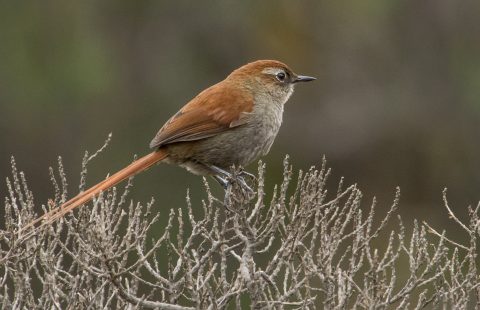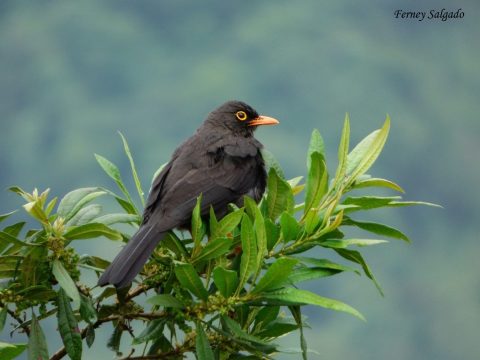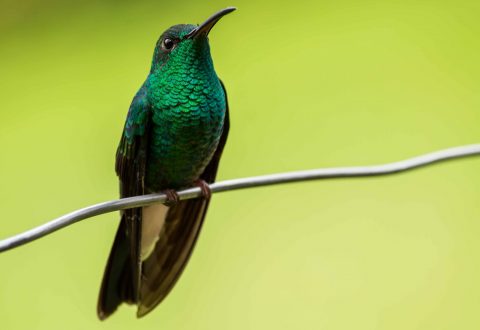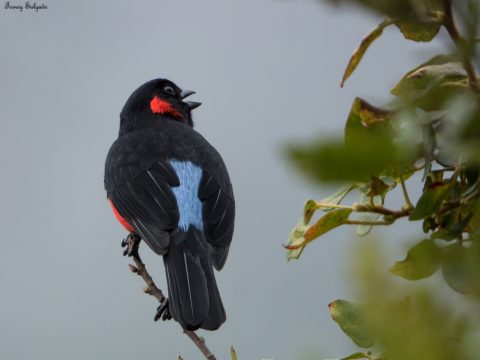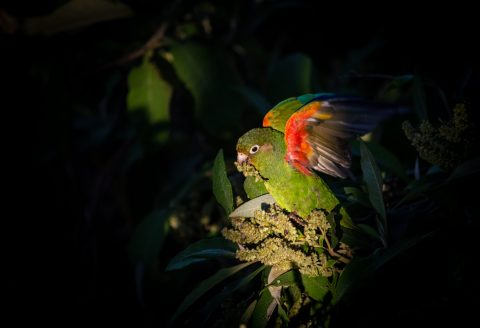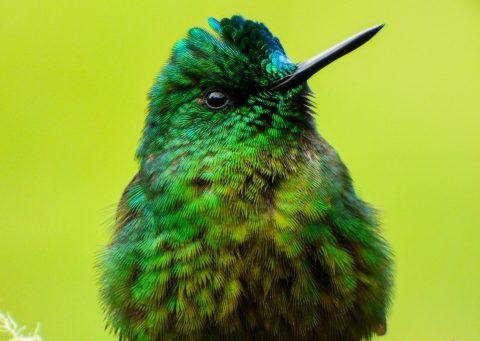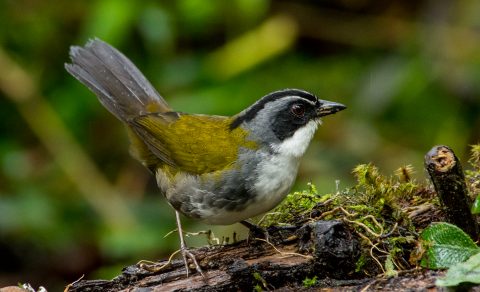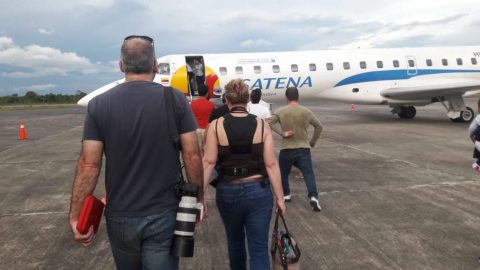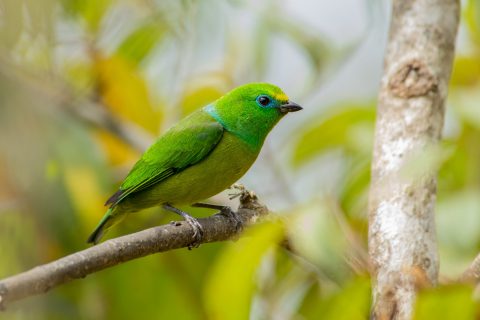It is common to abundant in savannahs and other open areas, including cultivation, and it readily adapts to human habitation, being seen on wires and telephone posts near towns in Trinidad and Venezuela, almost in all public spaces of large urban areas such as Bogotá, Colombia and feeding near beach resorts in Tobago.

It is found in the Andes from western Venezuela to central Peru. In Colombia it is found from 2300 to 3600 m above sea level in the Eastern Cordillera from the south of the department of Norte de Santander to the south of Cundinamarca and in a small region of southern Santander. Also in the Central mountain range in the south of the department of Caldas, east of Risaralda and Quindío, north of Tolima, south of the department of Huila, southeast of Cauca, east of Nariño and west of Putumayo.
It feeds in couples or in families especially on the ground although it can rise up to the canopy. It is a big seed scattered. Forage rummaging between leaf litter or in low vegetation to catch insects and spiders. It also consumes earthworms, snails, snakes, frogs, lizards and mice. There are records of predation of smaller bird nests.
This hummingbird is relatively common in dry, wet, and very humid forests. It uses secondary mountains, forest edges and clearings, semi-open areas and coffee plantations.
Solitary, in pairs, or family groups; often with mixed flocks. Forages at all levels, from bushes at borders to canopy. Vocal year-round, sings both on exposed perch and concealed.
Close observation showed that the Santa Marta parakeet’s diet correlated with vegetation abundance, which suggests that it exhibits ecological flexibility. Its foraging strategies, which change depending on vegetation, rely highly on group cohesion and altering between food sources
The long-tailed sylph feeds on nectar (as of many other hummingbirds), insects, and, at times, small spiders. Flowers with higher sugar content are often preferred. They can be seen at hummingbird feeders, as well. A long-tailed sylph can lick nectar up to 13 times per second!
It is found in the undergrowth of humid forest, especially near the edges.
Se mantiene la restricción al ingreso de viajeros internacionales hasta el 31 de agosto, que es la fecha hasta la cual se extendió la emergencia económica”, señaló la ministra de Transporte, Ángela María Orozco.
It is found on the edges of tropical and humid subtropical forests, very common in Santa Marta, with a medium dependence on forests. It has a strong relationship with plantations and with rural gardens.

